Brazilian rain tree Bonsai Care guidelines
The Brazilian Rain Tree can be kept indoors but needs a lot of light. It prefers a sunny place outside during the growing season. When temperatures drop below 7° C / 45° F the tree should be taken into the house and placed at a window facing south or under grow lights.
Keep the rootball slightly moist, never let it dry out completely. When the Rain Tree is placed indoors, try to provide extra humidity by spraying or placing the bonsai on a tray with wet gravel. Continue reading about watering Bonsai trees.
Watering
Free lecture from the Beginners CourseUse a liquid fertilizer every week during the growing season and once a month in winter.
When the Brazilian Rain Tree is pruned, leave a small stub in order to avoid a possible die-back. Don't use of a concave cutter on the Brazilian Rain Tree for this reason. Later the dry stubs can be refined. Trim the shoots regularly. Wiring is possible, but the use of guy wires seems to be a better technique for the Rain Tree. Continue reading about pruning Bonsai trees.
Repot the Brazilian Rain Tree every two or three years with moderate root pruning. A well-draining soil mix is important to avoid root rot. Continue reading about repotting Bonsai trees.
The Brazilian Rain Tree can be propagated from seeds and cuttings. Air-layering is also possible.
The Brazilian Rain Tree is quite resistant to most pests and diseases, but it can be attacked by nematodes, which provoke visible root nodules that are integrated into the roots. Use a nematicide in this case. If kept as an indoor plant, aphids, spider mites, and white fly can bother the tree. They can be controlled by using specific pesticides. For more detailed information on these techniques, check out our Bonsai tree care section.
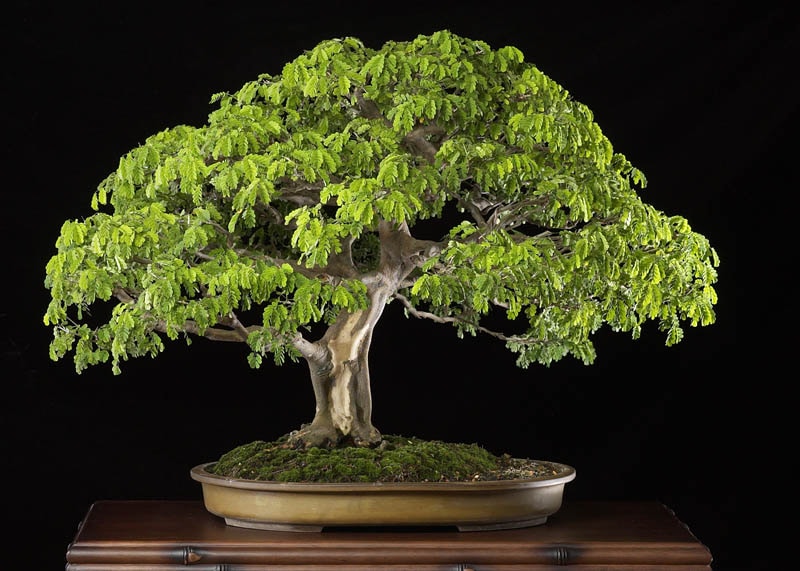
Brazilian rain tree bonsai tree
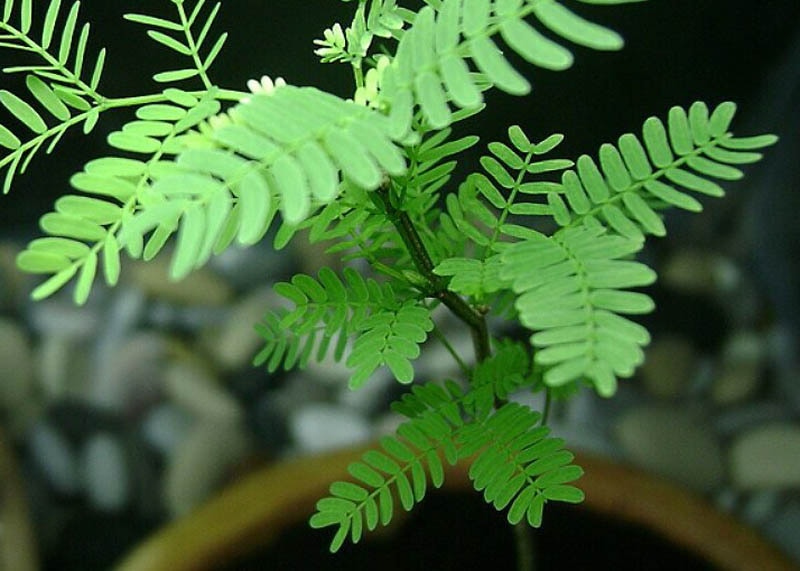
Leaves of the Brazilian rain tree
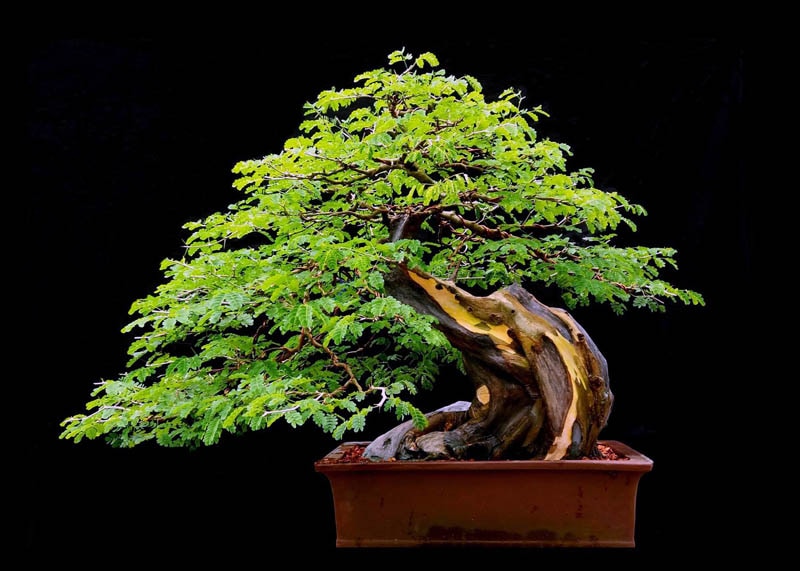
Pithecellobium bonsai
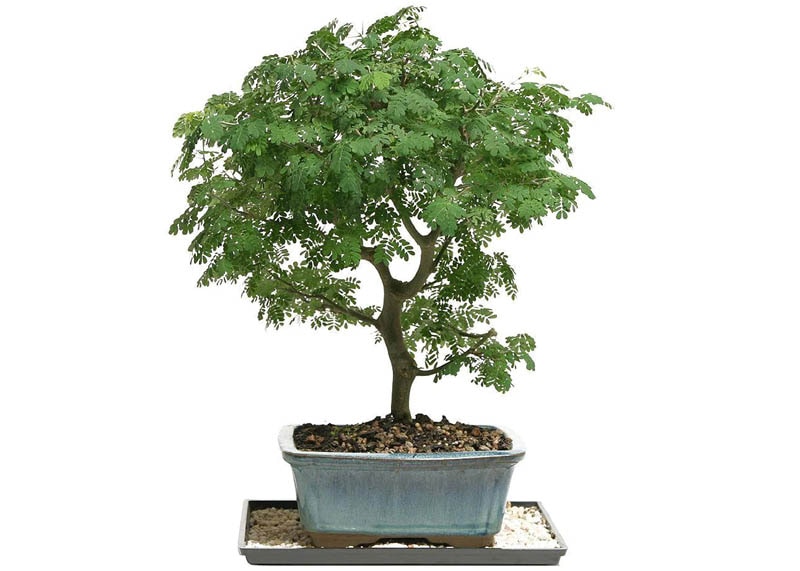
Brazilian rain tree bonsai
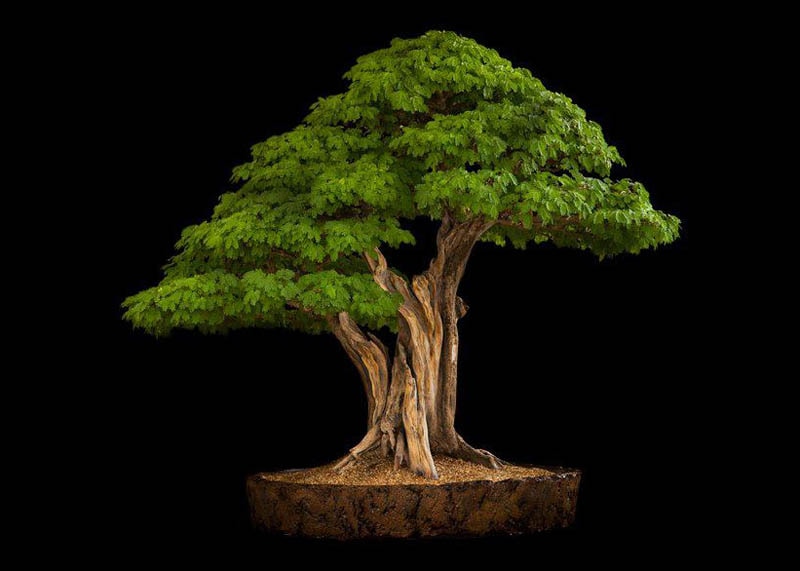
Brazilian rain tree
General information about the Brazilian rain tree Bonsai
The Brazilian Rain Tree, or Pithecellobium tortum (also called Piteco), is a hardwood tree native to Brazil's rainforests. The Rain Tree has delicate branches and compound leaves with tiny light-green leaflets. The leaves fold up in the evening and open up again in the morning. The fragrant flowers are puffy and white or pinkish. The Brazilian Rain Tree belongs to the legume (Leguminosae) family, together with species including the Acacia, Tamarind and Powder puff. The Rain Tree tolerates dry conditions, however it prefers to be evenly moist in a container. It likes warm temperatures and full sun in nature, but in a bonsai pot it should be protected from extreme heat and sun during the hottest days of tropical summers. The Brazilian Rain tree does not tolerate frost. If you need help identifying your tree, take a look at our Bonsai tree identification guide.





